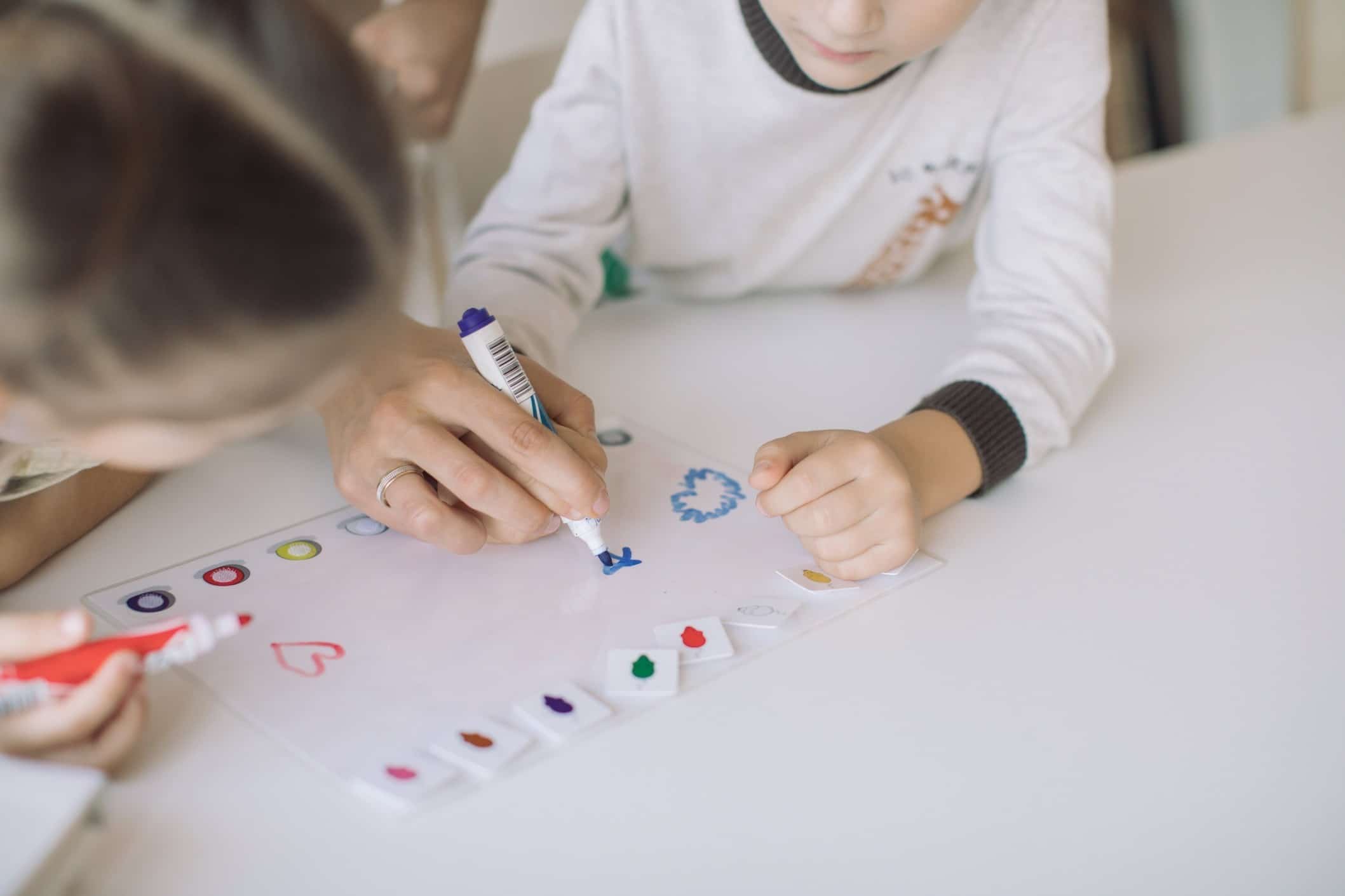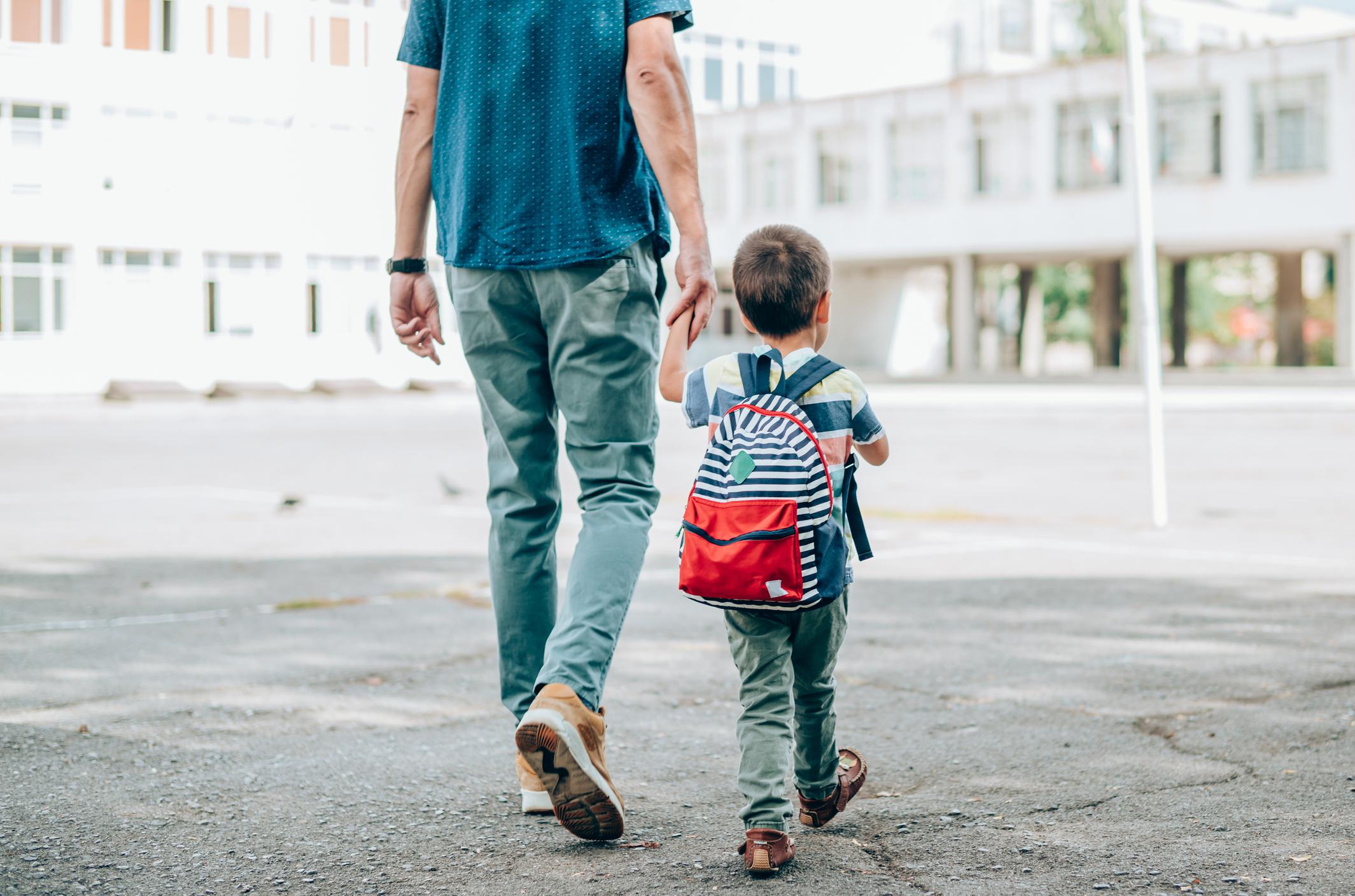5 tips for homeschooling a child with special needs, according to a special ed teacher

School closures are a challenge for parents of special needs kids, but here's what a teacher wants you to know.
Table of Contents
This is a trying time for all parents as schools are closed nationwide to protect children, teachers and families from coronavirus. As a special education teacher for 17 years, this is new territory for me as well. I get daily emails from my supervisors and district leaders on what to expect and what is happening, and I’m keeping in touch with all my parents, too. Luckily, I have great parents to work with and I want to support them and my students as best as I can.
Here is my advice on 5 things parents of special needs children can do to help your child through a school closure.
1. Get + read the most recent IEP for your child.
In the Individual Education Plan there are two key items you should be aware of:
Goals: You and the teacher of record as well as any service provider should have worked together on goals for your child. These are important guides for what you can be doing with your child at home.
For instance, if one of the goals was to learn about reading a clock and understanding elapsed time, that could be a skill you can work with at home. If a goal was for your child to pick from a field of three options for a cause/effect reaction, have your child pick lunch from three options. I know there are many different abilities, so there are going to be many different goals. Focusing on your child’s goals in their IEP can make it easier to decide what you want to teach and review with your child.
Provisions: Be aware of what services your child usually gets and how often as part of their IEP, such as speech therapy, occupational therapy or physical therapy. Depending on where you live and how the decision to close school was made, your school district may have to compensate for these lost services.
If your school district is closed by government order the school district will not have to compensate for that lost time (or for any time covered by already-scheduled school vacation days). It is only when a school district has closed by their own decision without permission to waive the school day, while still providing education services for the general-education population that special education services would have to be counted in the provisions.
2. Ask for a basic daily schedule.
Contact your teacher of record to ask for a basic daily schedule. You are not required to follow it completely, but students like consistency. If you can create a schedule with some pieces of what your child was used to, it will be helpful. Everyone can do some kind of calendar time, math center time or reading time. Work with what you have at home.
3. Explain the disruption with care.
If your child is asking every day, “is it time for school?” or is starting to have meltdowns because they’re not on their usual schedule, think about what you can say to your child that meets them where they are. If they can understand school is closed because of a sickness, then share that, and use a calendar to show how many days you have been staying home. If your child is confused and unable to process, tell them the school is on a break. Focus on talking about what the experience of having an extended break from school is like, instead of trying to explain contagious disease and social distancing.
4. Lower your expectations.
This is an extremely stressful time for all Americans—parents and kids. Your family’s focus should be on staying safe and healthy. If you don’t have every assignment done, if your child spends more time on a screen than usual, believe me, it’s fine. There may be regression, and there will be less progress than you wish, but your child will be safe from getting sick and you will be safe from fearing for your child’s health.
5. Use the resources in your community.
It’s inspiring to see how many communities and organizations have rallied to offer support and resources. Many school districts are offering food pickups, online educational platforms are offering free programming, and across the country, community shelters and services are ramping up to help people. Use your school’s website for information about your child’s school and to learn what plans are being put into place to deal with closures. The PTAs at many schools have online groups on Facebook, Konstella or other digital community apps where parents are connecting and sharing information, including ways to support your school and community.
Stay safe and healthy. Enjoy the time you have with your child and family. We’ll see you when the schools reopen—and we’ll greet your kids with the biggest smiles.










































